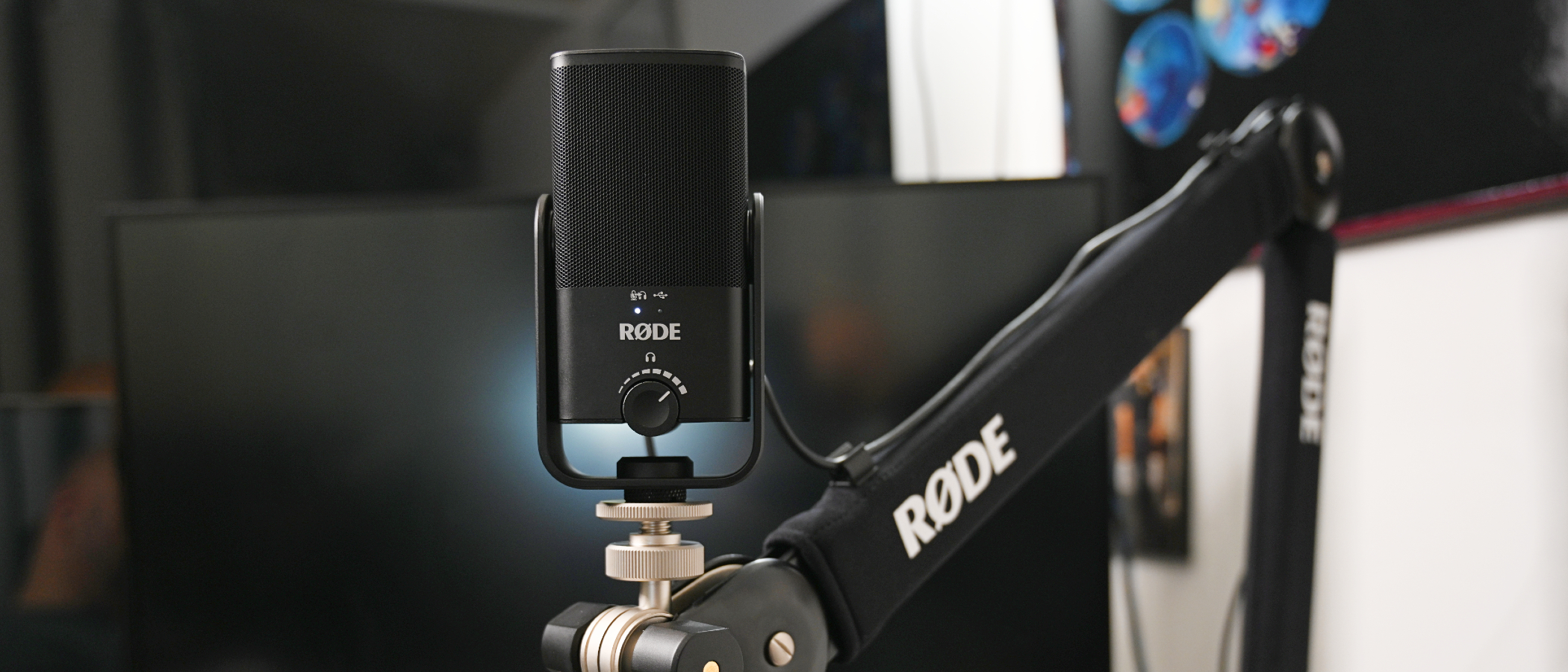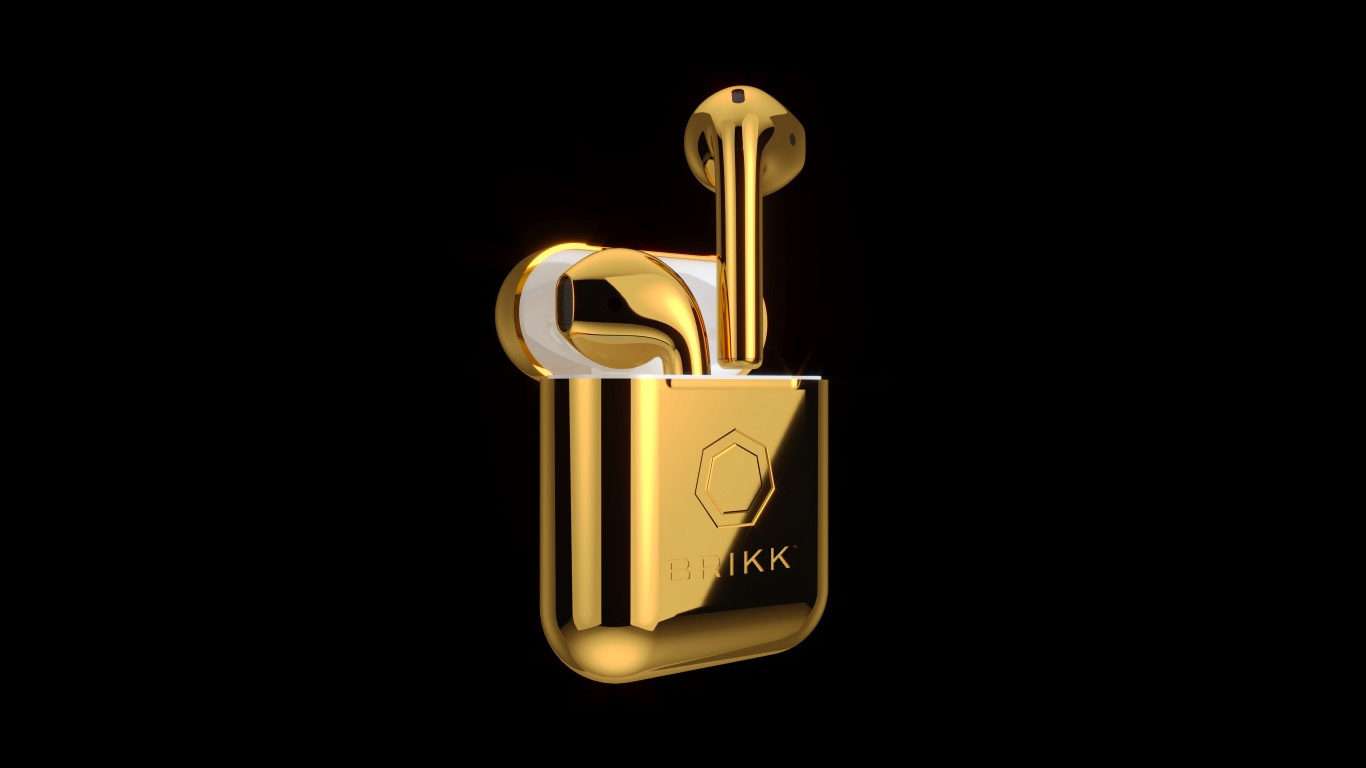Laptop Mag Verdict
The Rode NT-USB Mini mic is a straightforward, plug-and-play beast that records studio-quality audio right out of the box
Pros
- +
Easy to use
- +
Excellent audio quality
- +
Warm crystal-clear DSP-free recording
- +
Built-in amplified headphone jack
- +
Sturdy build
- +
Creative magnetic desk stand
Cons
- -
No gain knob
Why you can trust Laptop Mag
The Rode NT-USB Mini is crafted to produce studio-level audio recordings. For $99, you’re not going to find a better USB microphone, and in fact, it’s better than some more expensive USB mics I’ve reviewed. What it lacks in features and style, it makes up for in plug-and-play usability, with a lot of “let's get this recorded and sounding great” know-how.
The Rode not only sets itself apart with its simple square styling, magnetically attached base, and one dial push-button control, but the audio produced by the studio-quality condenser is equal to many XLR microphones I’ve used. Lastly, the free Rode Connect software takes everything up several levels. So let’s dive into the Rode NT-USB Mini microphone and find out why it may be one of the best USB microphones of 2021 for under $100.
Rode NT-USB Mini mic design
The Rode NT-USB Mini is a beautiful matte-black brick of a microphone. In hand, it’s about the size of a large bar of soap, which makes it highly portable. Measuring 5.6 x 2.1 x1.8 inches and weighing 1.2 pounds, with a circular base diameter of 3.5 inches, the matte black NT-USB Mini is a stocky, compact USB microphone. Compared to the Blue Yeti Nano, which comes in at 1.3 pounds and measures 4.3 x 3.7 x 8.3 inches, the NT-USB Mini is close in size and weight, but both are heavier than the 9.5 x 6.6 x 4.2-inch JLab Talk, which weighs in at just under a pound when in its stand and 0.4 pounds when the stand is removed.
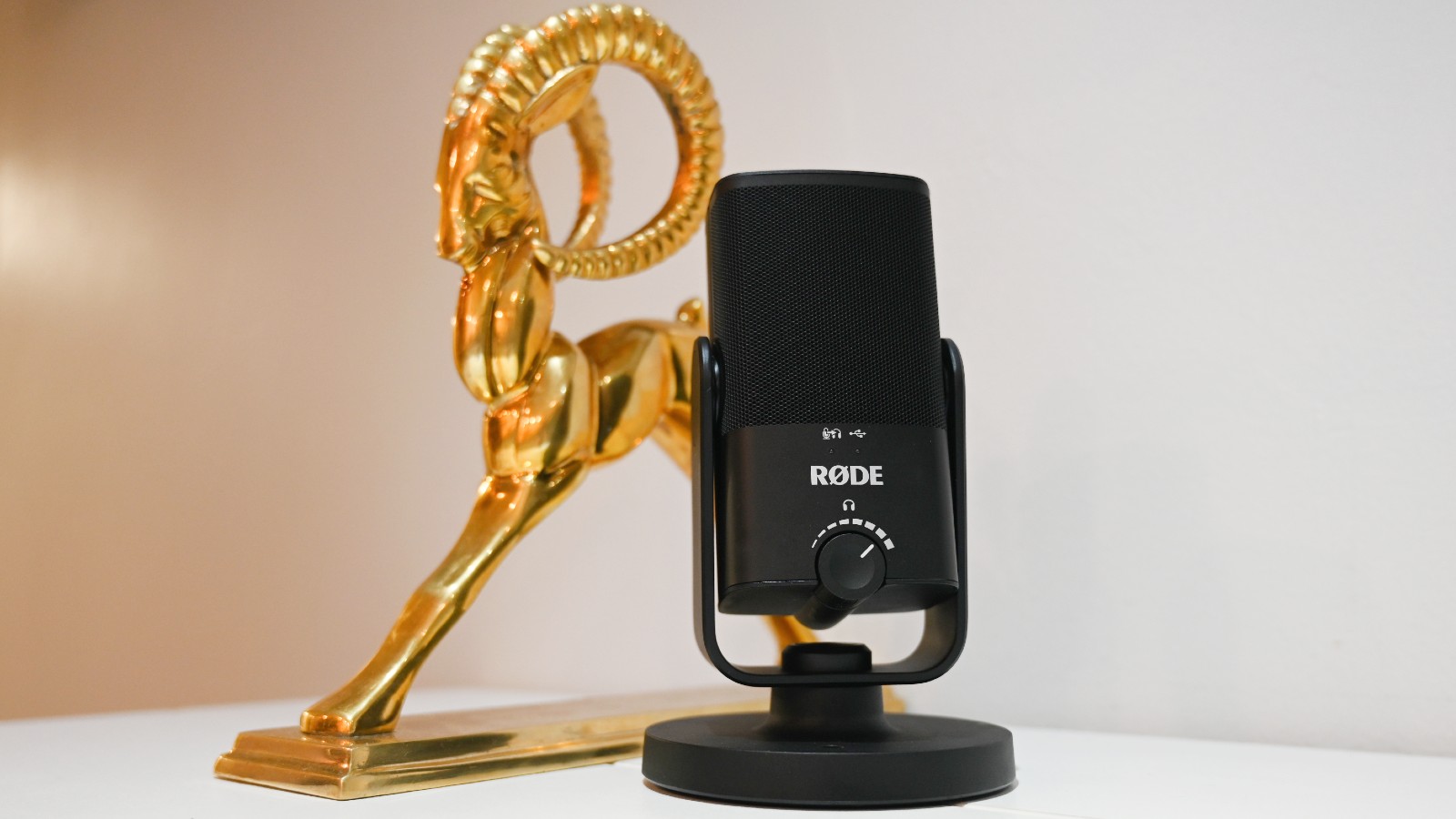
On its front face, the mic has a Rode logo in a bright white font. There’s a headphone volume knob, as well as two LEDs that let you know when the mic is on and which monitoring mode you’re using. Pressing the volume knob turns the zero-latency mode on or off. The Zero Latency monitoring works well to prevent echoing, and the built-in headphone amplifier delivers clear audio to your headphones. There is no gain control on the mic, but it’s not an issue because of how well Rode tuned the condenser microphone.
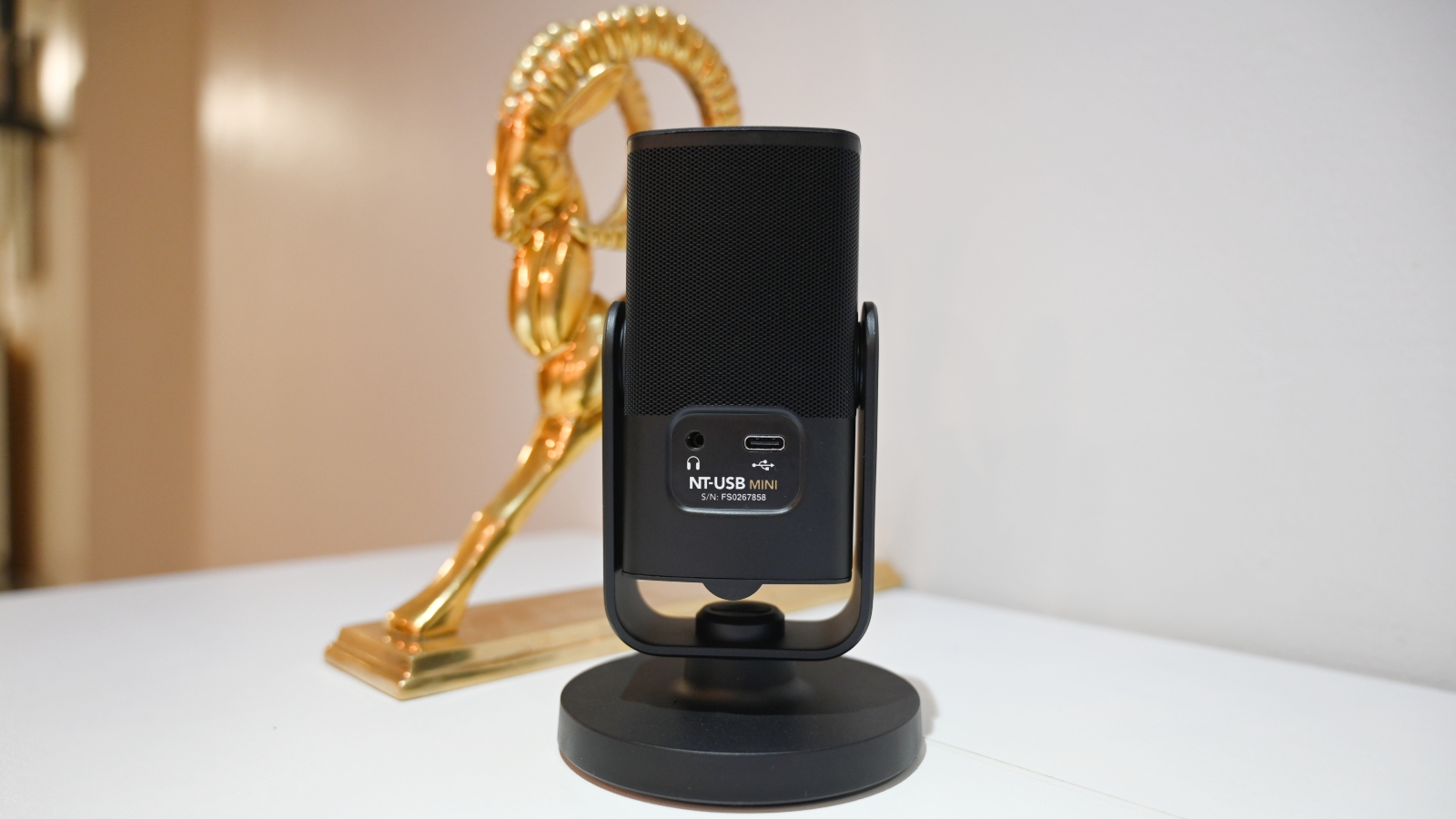
Despite the solid weight of the unit, the mic maintains a sturdy hold when it's magnetically to a desk stand. If you wish to connect it to a microphone arm, just pop out the form-fitting rubber plug that protects the unit’s screw threads, and attach it to your mic arm via the mount adapter. The swing mount that the microphone sits in allows for 360 degrees of movement, which enables you to position it any way you wish.
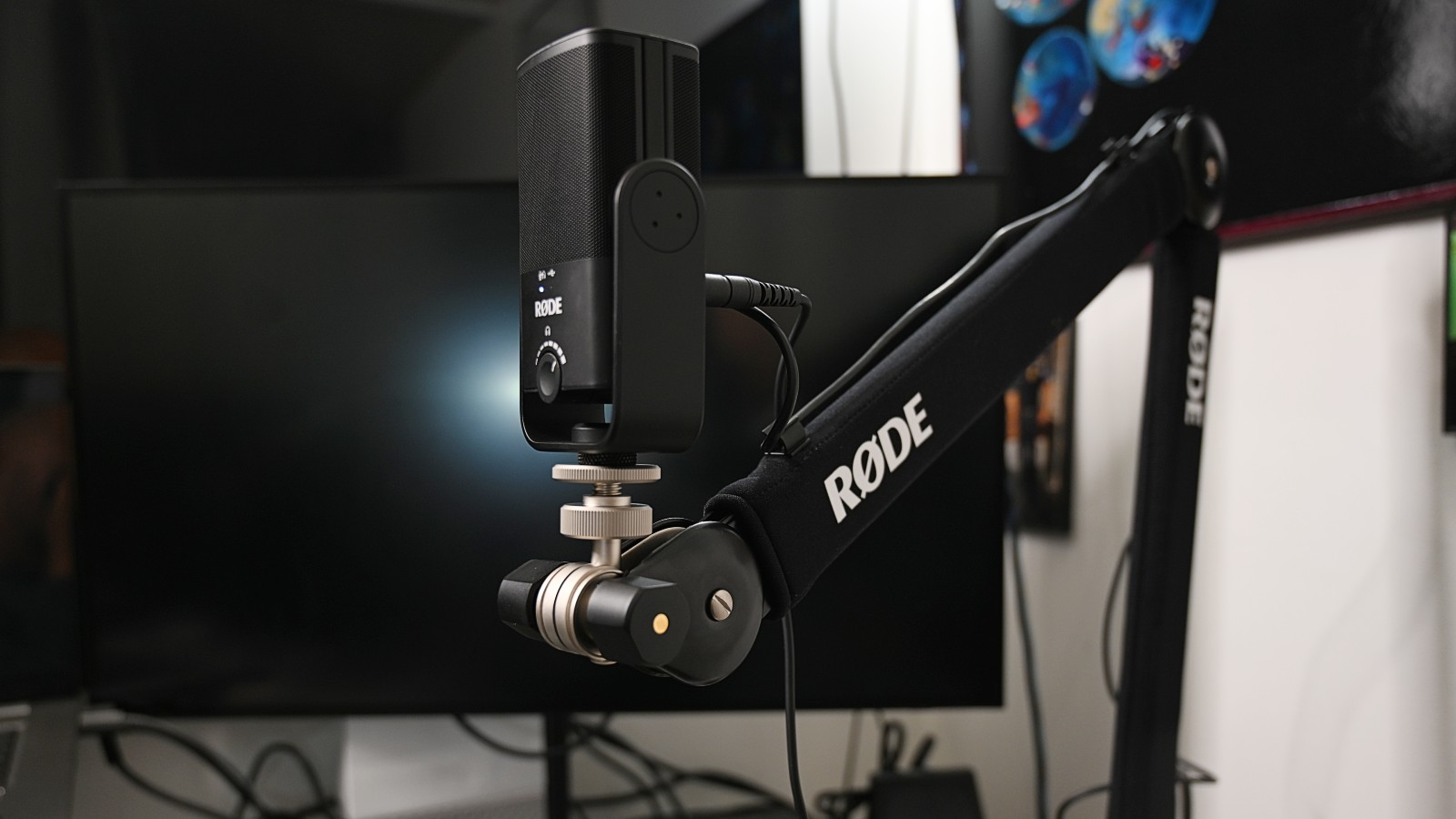
In the box, you will find the NT-USB Mini, one USB-C to A cable, one ⅜ - ⅝ thread adapter, and the Rode 2 Year limited warranty card.
Rode NT-USB Mini mic quality
The Rode features an Electret condenser that uses a cardioid polar pattern optimized to focus on your vocals and reduce background noise. The Rode NT-USB Mini has a frequency range of 20 Hz - 20kHZ with 48kHz sample rates and 24 bits of depth. There is also a useful built-in pop filter to prevent plosives while recording audio.
The audio I recorded on the Rode NT-USB Mini is fantastic. I have a vocal range that goes from low rumble to high pitched falsetto, and the NT-USB caught all of it with depth and a rich warmth many USB mics miss. My recordings were reproduced with crystal clarity, with the mic capturing all the subtle timbre of my voice. Having spent a good part of the last 25 years in and out of recording studios, radio stations, and on podcasts, the Rode NT-USB Mini surprised me with how well it captured the fullness of my voice. That consistency makes it one of the best USB microphones for streaming in 2021.
You can’t control the gain via the knob like you can on other mics. And no, it doesn’t have flashing lights that could wow your Twitch followers. However, I made 20 different recordings, and each turned out great. I changed my distance while recording and even created background noise, and yet, each recording sounded professional.
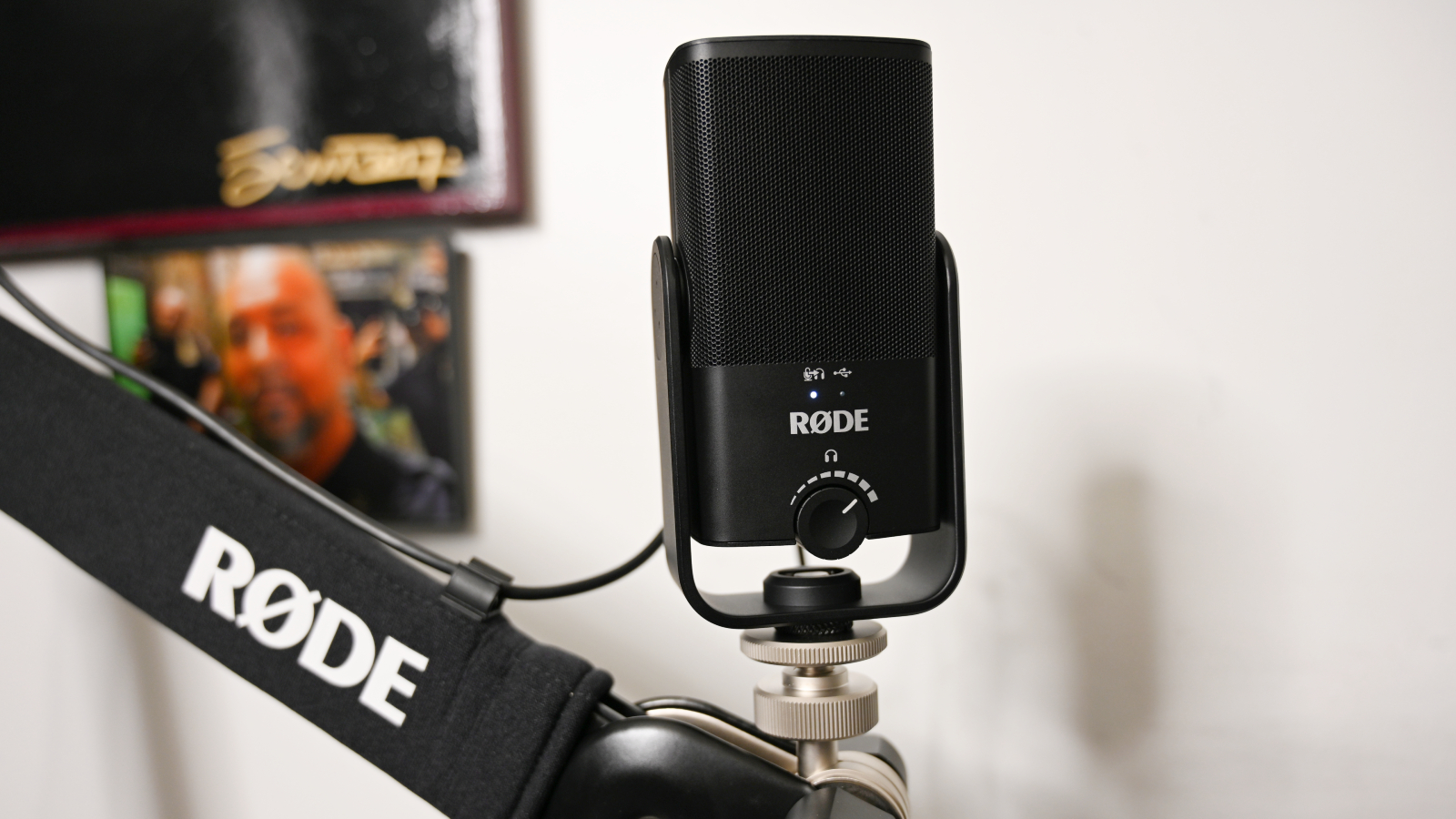
The clarity and warmth of my voice were consistent throughout, so I used it for a remote appearance on Sirius XM Radio, and the producer complimented me on how good I sounded. Over the next few days, I took part in several Google and Zoom meetings, and I received compliments about my audio quality.
There were never any gain issues; the mic never struggled to pick up my voice, nor did I have problems with my recordings fading in or out or being too loud. The NT-USB Mini simply focused on my voice and recorded warm, precise, clear audio without me having to fine-tune any settings. I was kind of shocked, but then it got better. Mind you, this was all before I downloaded the Rode Connect app, which we’ll get into next.
Software
Plug and playability without having to download any extra drivers is always a wonderful thing. The Rode NT-USB Mini just works, and it plays nice with Mac and Windows 11 systems. However, if you’re looking for more customization, the Rode Connect software can be downloaded for free. This little digital mixing suite is user-friendly and gives you many options, even the ability to connect up to four NT-USB Minis or two Wireless GO mics and control them all from your computer. It’s like having a studio mixer at your disposal. Also, due to the small size of the NT-USB Mini, carrying a few in a laptop bag means you can pretty much record your podcast or other audio anywhere you wish.
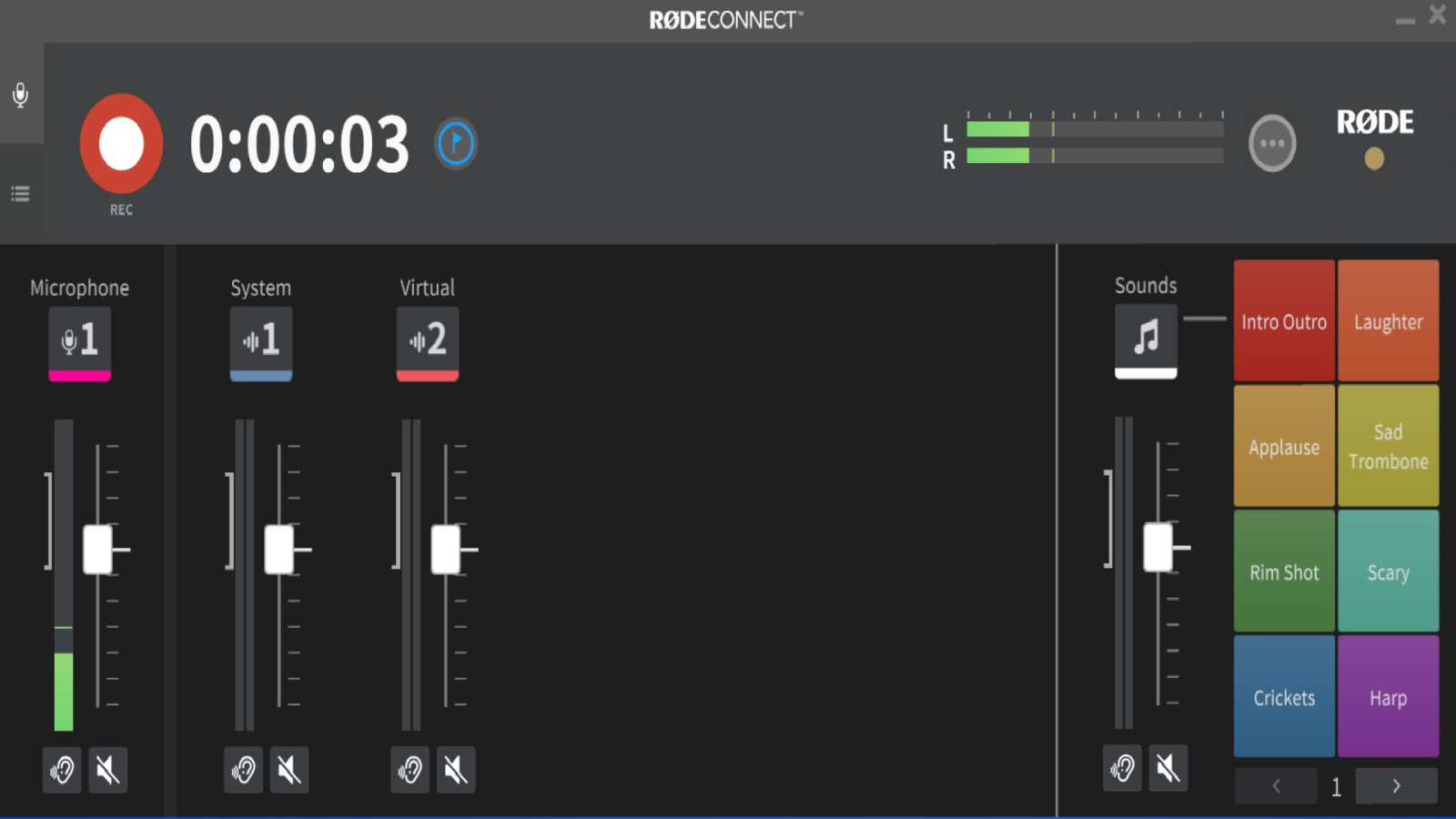
Why is this such a big deal? Because until recently, using more than one USB mic was difficult as most sound cards are not built to handle multiple audio recording sources. You could use tricks and software to support numerous mics, but the quality wasn’t always assured. Rode has come closest to perfecting this implementation. Thanks to the Rode Connect app, users have access to a feature-filled recording interface that includes broadcast-style faders, level metering, and mute buttons on their computers with the ability to mix in some preloaded sound effects like applause, laughter, and intro/outro music. Users can also control the gain and have access to the Aphex Aural Exciter, Big Bottom, powerful digital processing like noise gate.
Bottom Line
The Rode NT-USB Mini microphone is a straightforward plug-and-play USB mic that will level up your Zoom calls and give your podcast that clear, warm, professional sound you desire. The stocky little performer packs professional studio-quality audio in a device the size of a large bar of soap that you can toss in your backpack.
What the mic lacks in onboard features is made up for by the Rode Connect app, which raises the quality level and performance while adding features many other USB Mics in this price range cannot match. It records audio that's on par with the more expensive Shure MV7 ($249) while matching the compact size and sturdiness of the Blue Yeti Nano. At the end of the day, the Rode NT-USB Mini is a great investment to ensure you’re creating great-sounding audio for your content.
If you want to compare the Rode NT-USB Mini to other USB mics, check out our Best USB Mics page.

Mark has spent 20 years headlining comedy shows around the country and made appearances on ABC, MTV, Comedy Central, Howard Stern, Food Network, and Sirius XM Radio. He has written about every topic imaginable, from dating, family, politics, social issues, and tech. He wrote his first tech articles for the now-defunct Dads On Tech 10 years ago, and his passion for combining humor and tech has grown under the tutelage of the Laptop Mag team. His penchant for tearing things down and rebuilding them did not make Mark popular at home, however, when he got his hands on the legendary Commodore 64, his passion for all things tech deepened. These days, when he is not filming, editing footage, tinkering with cameras and laptops, or on stage, he can be found at his desk snacking, writing about everything tech, new jokes, or scripts he dreams of filming.
